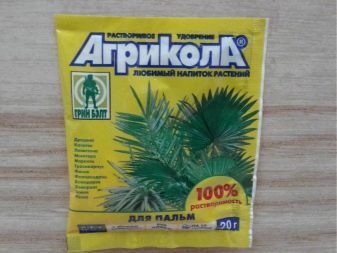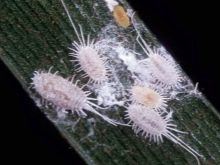What does a hamerops look like and how to grow a palm tree?

The exotic evergreen chamerops plant is often used in garden decoration. Thanks to its distinctive visual characteristics and easy care, the palm tree has gained wide popularity among professional and novice gardeners.

general description
Hamerops is a squat type of palm tree with a small height, dense crown, a well-developed root system and a thickened trunk. Can be grown both outdoors and indoors.
The leaves of the plant are rather tough, with a fan-shaped structure. They consist of narrow or long segments of the xiphoid type and differ in slightly pointed and curved petioles. The palm tree usually has a green tint with a small proportion of bluish and silvery colors.

When blooming on a palm, small unisexual flowers are formed, which are collected in dense, long and strongly branched inflorescences. They hang beautifully from the main canopy, enhancing the visual and decorative characteristics of the crop.

Varieties and hybrids
Despite the fact that hamerops does not differ in a large variety of species, the available varieties are still actively used in the creation of landscape design and when grown at home.
Let's list the bred plant hybrids.
-
"Volcano". A relatively low shrub, characterized by a thick stem system and a small crown. The dark green leaves are firm, fan-shaped and glossy. The petioles of this variety lack the typical spiny thorns. The flowers are yellowish with an orange tint.

- "Exeltsa". It is an ornamental hybrid of a palm tree with distinctive large leaves. The crown is characterized by an attractive appearance of a green-gray coloration and a complete absence of pubescence. A bluish-silvery outline is present at the edges of the leaves.

- "Cerifer"... The only frost-resistant plant species that can withstand temperatures down to -6 ° C. The tall and bushy hybrid is characterized by light green leaves with silver hairs. The petioles are usually pointed.

Despite their distinctive visual characteristics, the varieties described above are grown in the same way. Thanks to this feature, even a novice gardener can deal with a palm tree.
Landing nuances
The most important planting feature is the addition of drainage components to open ground.... The potting mix itself is recommended to be diluted with 10-15 g of local soil from the garden.
When planting a plant, you should not immerse the seedling too deeply, but only slightly raise its main root collar by 2-3 cm from the ground level. Otherwise, the roots of the palm tree will not be able to develop effectively.

Care features
Despite the fact that the houseplant is not whimsical to external conditions, it is important to always monitor its growth and be aware of the basic rules of care. Only in this case can you achieve a beautiful appearance, splendor, and also significantly reduce the risk of pests or diseases.
The key steps in caring for a palm tree are creating the right lighting, adhering to the watering schedule, maintaining the temperature regime, as well as timely fertilization and preventive work to eliminate pests.


Conditions
In nature, the palm tree usually grows in places with abundant light and is well tolerated in direct sunlight.... It is better to grow a plant at home on the south side. A well-lit balcony or small garden would be preferred.
When choosing a location, you must take into account the fact that too drastic changes in lighting can negatively affect the growth of the culture. Many experts advise darkening the flowerpot in the fresh air in the first few days of growing. This will prevent rapid wilting and will saturate the palm with essential nutrients.

If in winter hamerops grows better in the presence of a small shade, then in the summer it is recommended to take it out into the fresh air. Young shoots must be gradually accustomed to the sun's rays. Indoor cultivation is most effective at a temperature of no more than 16 ° C, for wintering - in the range from 6 to 8 ° C.

It is strictly forbidden to place the plant near heating appliances. Otherwise, the earthen lump will begin to dry out quickly, which will lead to the formation of fungal diseases and the subsequent death of the palm tree.
Watering
In order for the hamerops to be distinguished by good growth and development of the root and stem systems, it must be watered as the top layer of the soil dries out. Plant leaves should be regularly wiped with a slightly damp cloth or sprayed with a spray bottle - especially on hot summer days.
In the winter and autumn seasons, spraying is usually not carried out - it is enough to monitor the absence of dust on the leaves. If this is not done, the palm tree will begin to fade quickly due to the inability to obtain nutrients from sunlight. It is important not to allow the soil substrate to completely dry out, which negatively affects the foliage.

Transfer
Experts recommend replanting a young palm tree every 3-4 years, a mature plant every 5 years. The best period for this is the spring or summer period. It is better not to carry out this procedure in the cold season.
To grow a beautiful and healthy crop, you need to pick up an earthy mixture of sand, humus, turf and any compost substance, which are mixed in equal proportions.



A mature tree is transplanted into soil with a minimum percentage of sand.
Chamerops should be transplanted with extreme caution. Otherwise, the fragile root system can collapse or break. Gardeners advise using the transshipment technique:
-
remove the palm tree with an earthen clod from the pot;
-
carefully place the roots in a new vessel;
-
sprinkle with previously prepared fertilizer.

After completing the above actions, the palm tree must be watered and the leaves must be thoroughly wiped. For spraying, use slightly warm water, which has been infused for 5-7 days.
Almost all varieties of hamerops are transplanted no more than once in 2 years. As you transplant, it is also necessary to increase the size of the flowerpot. Otherwise, the plant will not have enough strength to develop the root system in the future.
Contrary to popular belief, it is impossible to add sawdust to the soil. The use of wood shavings greatly increases the moisture content of the earth, which leads to rotting and infestation of the palm tree. In hot weather, it is forbidden to add manure.

Top dressing
The main factor in the rapid growth and development of the root system of a palm tree is the presence of frequent feeding. Most varieties need to be fertilized 1–2 times a week using mineral-based complex formulations. Usually, specialized tools are used for indoor flowering crops.
The feeding recommendations are applicable for both horticultural and indoor growing. Additional fertilization is introduced when the palm is transplanted to a new location.
With active growth and development of the root system, fertilizing watering is performed much more often than the standard schedule. As practice shows, it is better to "underfeed" hamerops than to burn the roots with an overly concentrated chemical composition.
The only suitable organic fertilizer is manure, which contains a large number of trace elements and compounds that contribute to the rapid growth of culture. To get such a top dressing, it is necessary to mix 150 g of the substance with settled water and leave to ferment for 10-12 days.

Dormant period
The first thing to do during the dormant period of the palm is to reduce the number of watering to 1 time in 2-3 weeks. Spraying of foliage is carried out in the usual manner. The earth ball should be slightly damp, but not wet. You should also halve the amount of fertilizer.
The dormant period is also influenced by the temperature regime of the environment. Regardless of whether the plant was grown from seed at home or planted by any other method, the indoor temperature should be in the region of 8-12 ° C.

Reproduction
Usually exotic palm is grown by the sowing method. For this, the seeds are placed in the ground to a depth of 1 to 2 cm. After this operation, the container with the seed material must be carefully covered using slightly damp moss. The optimum temperature for breeding is 25 to 30 ° C.
Using moss as a cover allows you to effectively retain moisture for a long time. Using this method, the formation of root suckers is also stimulated and the general condition of the root and stem systems is improved.
The first shoots with strong stems and root system appear approximately 2-3 months after planting the seeds. A uniform drainage layer must first be laid on the bottom of the container. To do this, you can use pebbles, expanded clay or ordinary coal.

Dividing a bush is a less common breeding method. To use this method, it is necessary to cut several shoots from the root system with a knife at a slight angle.

Palm trees are distinguished by a rather long rooting process - from 3 to 6 months.
For the sowing to be of good quality, it is necessary to pre-select pots with a volume of 2-3 liters. In such containers, a palm tree can grow for 5-6 years. After that, it is recommended to move it to fresh air, preferably to the garden.
Diseases and pests
Despite the fact that the palm tree is relatively rarely sick, it is susceptible to the negative effects of the fungus. The most common reasons for the appearance are excessive or uneven watering, as well as prolonged stagnation of moisture.
Fungal diseases appear as characteristic brown spots on the main foliage, while the root system gradually begins to rot. To avoid complete wilting of the plant, all areas where the fungus is observed should be removed. After that, the soil mixture is replaced and additional treatment with fungicides.
In the presence of a dry and warm room in winter, a spider mite often attacks the plant. A palm tree's weakened immune system and high soil moisture are the main reasons for a mealy worm or scale insect infection. To get rid of them, insecticides are applied.






































































The comment was sent successfully.